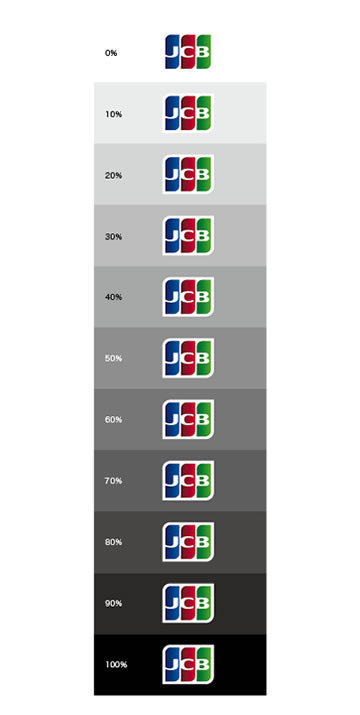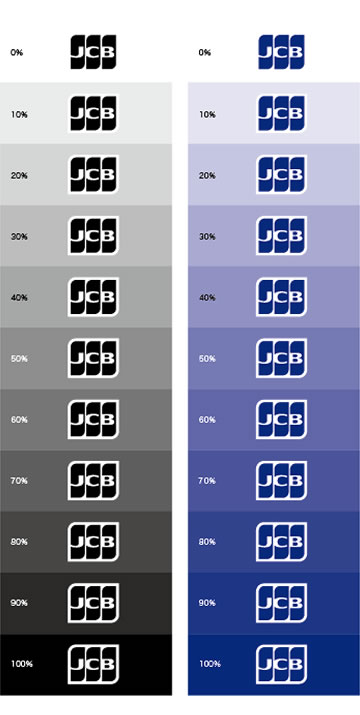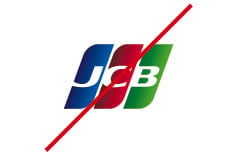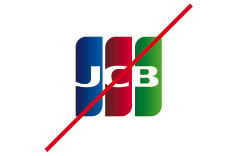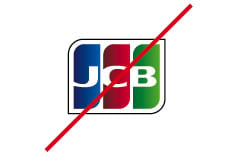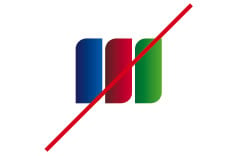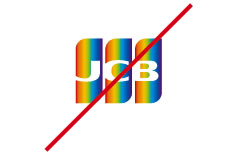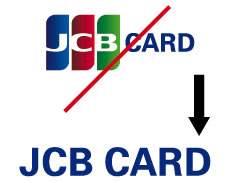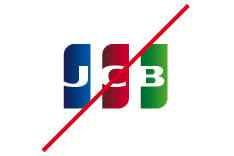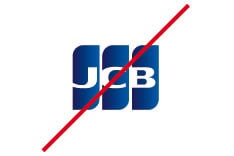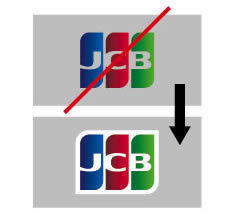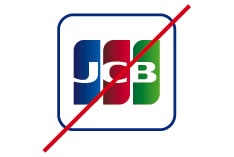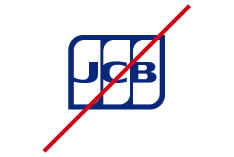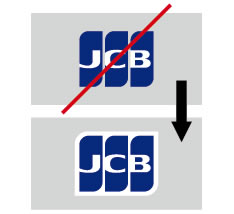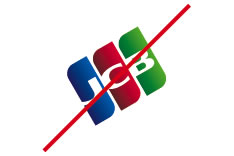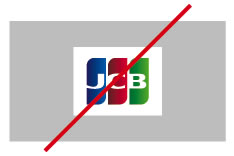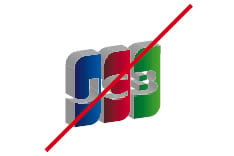JCB Emblem: Regulations for Display in Relation to Background Color and Prohibited Display Applications
Relationship of Display Color to Background Color Brightness
Some benchmarks for display variations depending on the brightness of the background color are shown below. Although the backgrounds are displayed in a single color here, you should apply these criteria appropriately when employing complex backgrounds, such as multiple colors or photos.
Prohibited Application Examples
Employing the JCB Emblem in ways other than those specified by the regulations will damage the brand image and value. Some clearly incorrect application examples are shown below. Always use the JCB Emblem properly and with due care.
Prohibited examples |
||
|---|---|---|
Do not distort. |
Do not change the ratio. |
Do not outline. |
Do not use without letters. |
Do not alter the colors. |
Do not add letters or words. |
Do not change the spacing. |
Do not display the gradations in single-color. |
Be sure to add a white outline when displaying the JCB Emblem in color. |
Do not enclose within shapes. |
Do not reverse a single color display. |
Add a white outline for single-color display of the JCB Emblem as well whenever white is displayable (except when using white only). |
Do not tilt. |
Do not enclose in white blocks. |
Do not display in three dimensions. |

